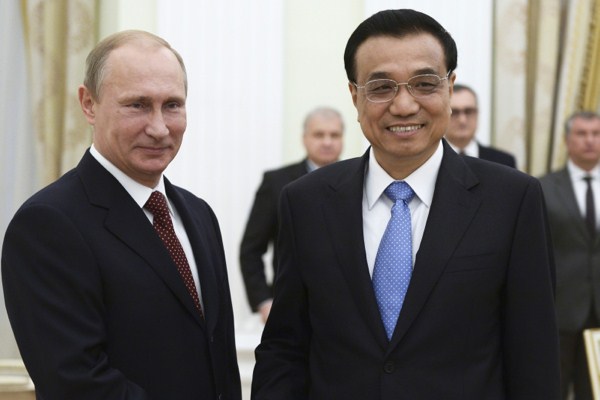The Russian ruble hit an all-time low of 48.7 rubles to the dollar earlier today, a casualty of escalating sanctions from the United States and the European Union in response to the conflict in Ukraine. Beyond the sanctions, Russia’s economic outlook is increasingly grim given the recent drop in global oil prices. At the same time, the Moscow Stock Exchange has announced that currency trades between the ruble and the Chinese yuan reached an all-time high in October, increasing 80 percent over the previous month.
The increase in currency trading is a direct result of a currency swap deal Russia and China signed during Chinese Foreign Minister Li Keqiang’s visit to Moscow last month, and it reflects, along with this year’s $400 billion deal on gas supplies, the ways in which the Russia-China relationship has benefited from Moscow’s tensions with the West.* As Richard Gowan wrote in World Politics Review, “Russia and China are good friends these days,” adding that on a recent visit to Beijing, “I was unable to find any experts who believed that the Russian connection was merely a passing fad.”
The rift between Russia and the West over Ukraine is likely to be permanent, at least as long as President Vladimir Putin remains in the Kremlin, and so it makes sense that Moscow is attempting its own pivot to Asia. Beyond the gas deal with China, in which Russia agreed to a lower price than it initially sought, Russia is also reaching out to other powers in the Asia-Pacific region. Russian arms companies are expanding exports to Indonesia, for instance, and the Russian navy is staging joint exercises with India and Japan, notwithstanding Japan’s nominal commitment to sanctioning Russia over Ukraine.

